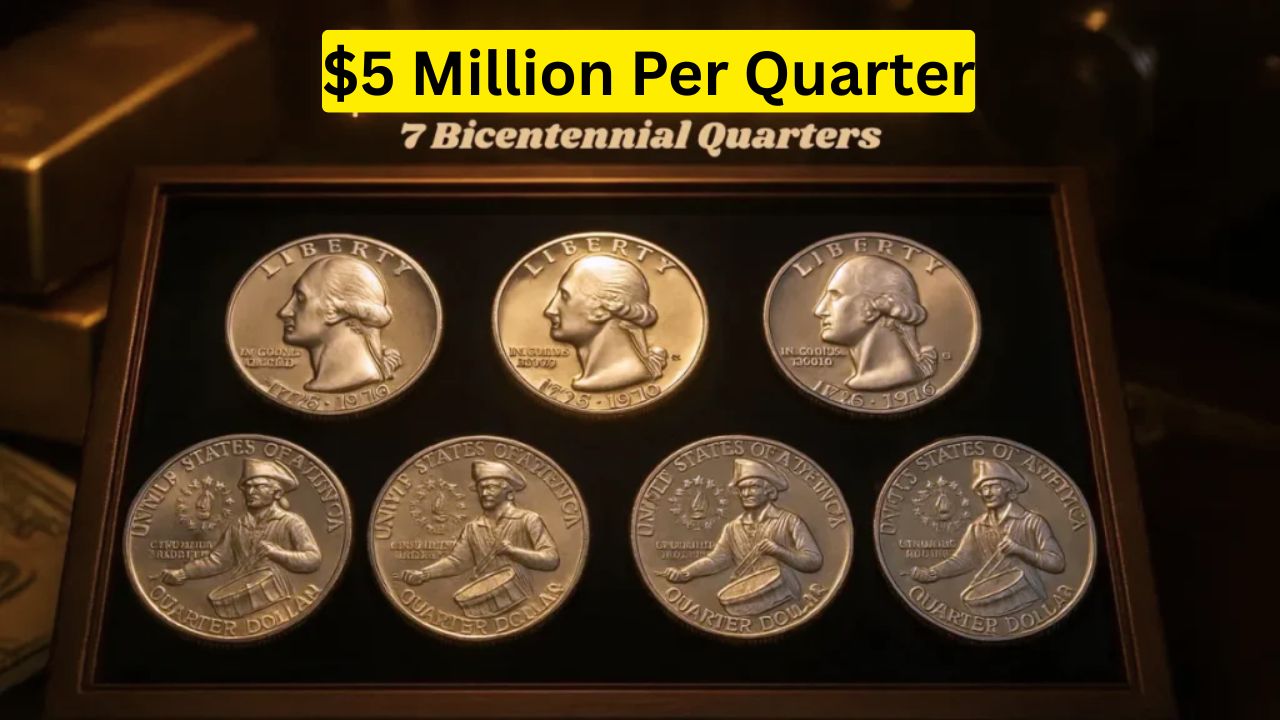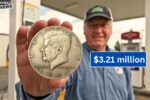In 1976, the U.S. celebrated its 200th birthday with special Bicentennial Quarters, and some of these coins could be worth over $5 million today. These quarters, with their unique double-date “1776-1976” and colonial drummer design, were minted by the millions, but rare versions with specific features have collectors buzzing. Could one be hiding in your pocket change? Here’s what makes these coins so valuable and how to spot them.
A Coin for America’s Big Birthday
The Bicentennial Quarter was created to mark 200 years since the Declaration of Independence. Featuring George Washington on the front and a colonial drummer on the back, designed by Jack L. Ahr, these coins were minted in 1975 and 1976. Most were made of copper-nickel, but some from the San Francisco Mint used 40% silver, making them rarer and more valuable. Over 1.6 billion were produced in Philadelphia and Denver, while San Francisco made about 11 million silver coins for collectors.
Why Some Quarters Are Worth Millions
Claims of Bicentennial Quarters valued at over $5 million have sparked excitement, but they often lack solid proof. The highest known sale was a 1976-S silver proof quarter in pristine condition, fetching $19,200 at auction. Rare errors, like double strikes or off-metal strikes, can drive prices into the millions, but no verified sale has reached $5 million. For example, a 1976 quarter struck on the wrong metal, like a silver planchet, could be worth hundreds of thousands. The coin’s condition, mint mark (D, P, or S), and silver content also boost its value.
Here are some key Bicentennial Quarters to look for:
-
1976-S Silver Proof: Made of 40% silver, weighs 5.75 grams, valued up to $288 in PR70 condition.
-
1976 Double Die: Letters or numbers appear doubled, worth up to $50,000.
-
1976 Off-Metal Error: Struck on silver instead of clad, potentially worth millions.
-
1976-S Uncirculated Silver: Mint state coins, valued up to $40 in MS69.
How to Find a Valuable Quarter
Spotting a rare Bicentennial Quarter is like a treasure hunt. Check the edge for a silver color—clad coins show a copper stripe, while silver ones don’t. Weigh the coin; silver quarters are heavier at 5.75 grams compared to 5.67 grams for clad. Look for mint marks: “S” for San Francisco (silver), “D” for Denver, or no mark for Philadelphia. Errors like doubled letters or numbers are rare but valuable. If you think you’ve got a winner, don’t clean it—cleaning ruins value. Take it to a professional coin grader or dealer for appraisal.
The Hype Around Million-Dollar Coins
Social media posts on X have hyped up Bicentennial Quarters worth $5 million or more, but these claims are often unverified. One post mentioned a “$200 million” quarter, yet auction records don’t support such prices. A 1976-S silver proof in top condition sold for $13,500 in 2023, showing high values are possible but not in the millions. These stories fuel excitement, but experts warn to check facts with trusted sources like the U.S. Mint or auction houses before believing the hype.
Start Hunting for Your Treasure
Bicentennial Quarters are a piece of American history, and while most are worth just 25 cents, a rare few could change your life. Check your change, old coin jars, or family collections for silver versions or errors. Use a magnifying glass to spot doubled designs or unusual marks. If you find something special, get it graded by a service like PCGS or NGC to confirm its value. Even if you don’t strike it rich, collecting these coins is a fun way to connect with the U.S.’s 200th birthday celebration.




